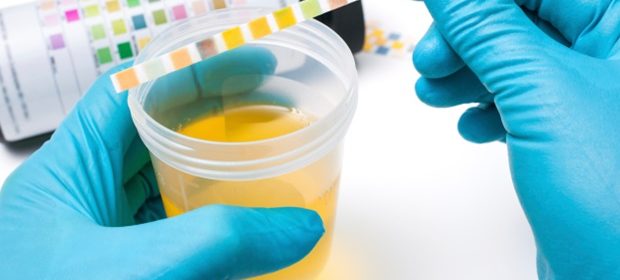amitriptyline for bladder

A neurogenic bladder stands for a lack of bladder control due to a dysfunction of nerves affecting afferent or efferent signaling. These nerves carry messages between the bladder and spinal cord, and direct the holding and release of urine. When the nerves fail to function, the symptoms of neurogenic bladder develop, which is the condition that affects millions of people around the world.
Function of the Bladder
Several nerve mechanisms regulate urine storage and bladder emptying. As urine fills the bladder, volume increases and urine is retained as long as pressure in the bladder remains lower than pressure within the urethra.
Sympathetic nerves assist in the storage of urine by inhibiting parasympathetic nerves that would trigger bladder contractions. The sympathetic nerves are responsible for the relaxation of the detrusor muscle and the constriction of the internal urethral sphincter.
When the bladder is full, the pudendal nerve becomes excited and contracts the external urethral sphincter. The intricate interplay between internal and external urethral sphincter maintains pressure and prevents urine from leaking out of the bladder, which is called the continence reflex.
When the bladder is full, the pudendal nerve signals the urethral sphincter and the pelvic floor to relax. Sympathetic nerves trigger relaxation of the internal urethral sphincter, and parasympathetic nerves relax the detrusor.
Pressure within the bladder then becomes greater when compared to the urethral pressure, and urine flows out. This process is normally consciously controlled, except in infants. A problem in any part of the nervous system may disrupt the voiding cycle of the bladder.
Injuries
Injury or damage to the nerves is a primary cause of neurogenic bladder. Some conditions or diseases of the body can result in nerve damage and, subsequently, neurogenic bladder. Examples of such conditions are diabetes, heavy alcohol use, vitamin B12 deficiency, neuropathy, and syphilis. The nerves can also be damaged directly, as from pelvic surgery, a herniated disk, or spinal canal stenosis.
The manifestation of neurogenic bladder varies depending on the site of nerve injury. Brain lesions above the level of the pons (a part of the brainstem) disrupt conscious control of the voiding reflex, but the reflex itself remains intact. This results in symptoms of frequent voiding of small volumes, and difficulties in holding the urine. Some types of brain lesions that can cause this type of neurogenic bladder are a brain tumor, stroke, and trauma.
Spinal cord lesions can lead to overactive bladder with urge incontinence. Trauma, tumors, and ischemia are examples of conditions that can injure the spinal cord leading to neurogenic bladder.
Injuries to the sacral cord prevent emptying of the bladder and disrupt the sensation of a full bladder, potentially leading to kidney damage. Tumors, herniated discs, and traumatic injuries are just several examples of the conditions that can damage the sacral cord.
When the peripheral nerves are damaged (such as by peripheral neuropathy), the bladder can distend painlessly leading to difficulty urinating and a hypocontractile bladder. A number of diseases and infections can cause this condition, most notably diabetes, poliomyelitis, Guillain-Barré syndrome, herpes, and neurosyphilis.
Central Nervous System Disorders
Disorders of the central nervous system account for a great many cases of neurogenic bladder. Some examples of those disorders are:
- Stroke
- Cerebral palsy
- Multiple sclerosis
- Parkinson’s disease
- Encephalitis
- Alzheimer’s disease
- Spina bifida
- Cancers
Sources
- https://www.ncbi.nlm.nih.gov/pmc/articles/PMC2897743/
- urologyhealth.org/…/when-nerve-damage-causes-bladder-problems-neurogenic-bladder
- www.spineuniverse.com/…/spinal-disorders-may-cause-neurogenic-bladder-disorder-or-dysfunction
- https://www.ncbi.nlm.nih.gov/pubmed/20955905
- https://www.ncbi.nlm.nih.gov/pmc/articles/PMC4467746/
- https://www.ncbi.nlm.nih.gov/pmc/articles/PMC3287034/
Further Reading
- All Neurogenic Bladder Content
- Neurogenic Bladder
- Managing Neurogenic Bladder
- Neurogenic Bladder Tests and Diagnosis
- Neurogenic Bladder Symptoms
Last Updated: Feb 27, 2019

Written by
Dr. Catherine Shaffer
Catherine Shaffer is a freelance science and health writer from Michigan. She has written for a wide variety of trade and consumer publications on life sciences topics, particularly in the area of drug discovery and development. She holds a Ph.D. in Biological Chemistry and began her career as a laboratory researcher before transitioning to science writing. She also writes and publishes fiction, and in her free time enjoys yoga, biking, and taking care of her pets.
Source: Read Full Article